Hydrotherapy for Chronic Pain Conditions
What is Hydrotherapy?
Hydrotherapy also known as aquatic therapy, uses water for restoring, maintaining, and regulating health. Water is used to alter the intensity of an exercise, and due to the buoyancy of water it is less stressful on a person’s joints and body in general. Treatments may include steam baths, saunas, aquatic exercises, hot/cold compresses, hot/cold showers, and water therapy. There are professional treatments, as well as treatments that can be done from the comfort of your own home.
Benefits of Hydrotherapy for Chronic Pain
Due to the buoyancy of water, many exercises that people can’t perform on land they can perform in water. It is easier to walk in water, do squats, lunges, and many other land exercises. There is a decreased gravitational force providing less stress and weight on joints such as the knees and hips. Hydrotherapy treatment options can be as simple as floating in water to receive temperature and relaxation benefits, to intense aquatic exercises. Some facilities even have underwater treadmills. Exercises can always be intensified by increasing speed of movement, turbulence, or adding objects to hold while moving in the water. Even individuals who don’t know how to swim can use hydrotherapy treatments. Water can create deeper relaxation for people physically, mentally, and emotionally.
How is Water Easier on The Body?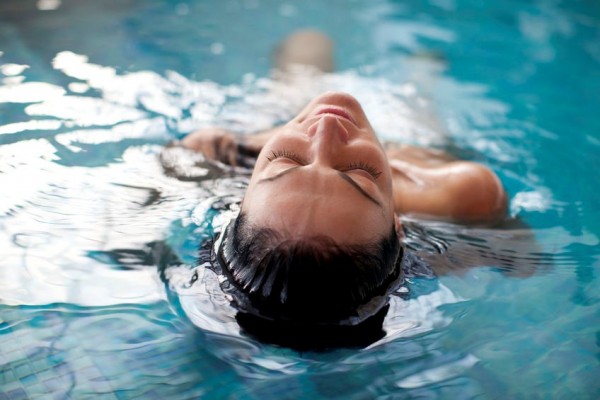
Just submerging your body waist deep into water, you will experience about 50% less weight. For example, semi-submerged in water, a 176lb person would be working with about 88lb. Then, with chest to neck level immersion your body weight is reduced by 75-90%.
How Temperature Affects the Body
One of the many benefits of hydrotherapy is water’s ability to alter blood flow. Cold water stimulates the body by constricting blood vessels and restricting blood flow to slow inflammation (University of New Hampshire). The blood goes away from the surface of the body toward internal organs, allowing them to function more effectively. Hot water relaxes the body by dilating blood vessels, increasing blood flow and sending it to the skin and muscles to ease stiffness (University of New Hampshire). The hot water also activates sweat glands and removes waste from body tissues. Some hydrotherapy sessions involve altering hot and cold water in order to decrease inflammation, strengthen immune system, stimulate circulation, cause lymphatic drainage, boost hormone function, and activate organ function. Temperature plays a very important role in hydrotherapy. With different health conditions treatments will require different water temperatures.
Healing from an Injury
Hydrotherapy can speed up the healing process for example of a broken leg or ankle. Once the cast is removed a person is still unable to place their weight on it. However, in water they can do a variety of exercises without placing weight on it. This will improve circulation in the injured body part which will speed up the healing process. In addition, by doing strengthening exercises range of movement will also be increased helping speed up recovery.
Here are Some of the Other Benefits of Hydrotherapy:
- Awareness and Confidence Improves
- Balance and Coordination Improves
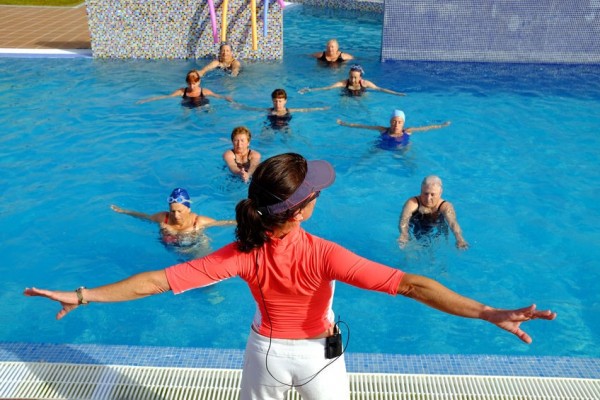
- Cardiovascular - Improves blood flow and decreases heart rate
- Circulation Increases
- Coordination Improves – Resistance of water provides feedback to the nervous system which improves coordination when walking.
- Endurance Improves
- Joint Range of Motion Increases
- Loosens Tight Muscles
- Pain Relief
- Paralyzed Muscles Re-educated
- Renal - Increases central blood volume, sodium, calcium and potassium excretion increases.
- Respiratory – Increases hydrostatic pressure in rib cage, increases airway resistance, and provides greater use of primary breathing muscles.
- Thermal Regulation – Water helps limit changes in body temperature in a warm or cold environment. Losing heat is ineffective because of submersion in hot water.
- Sensory – Strengthens weak muscles. Decreases sensitivity of nerve ending, decreases muscle spasm, and decreases muscle tone.
- Swelling Improvement due to hydrostatic pressure
Types of Hydrotherapy Techniques
There are many hydrotherapy techniques. Some that require professional guidance, and others that people can do from home. Just a hot bath in temperatures over 100 degrees Fahrenheit can help with relaxing tight muscles, relieving sore muscles, and improving arthritis symptoms.
Here are Some of the Common Hydrotherapy Techniques:
- Bad Ragaz Ring Method helps with muscle reeducation by allowing a person to float while performing resistance, endurance, elongation, range of motion, relaxation and tonal reduction techniques.
- The Balneotherapy has helped to cure many conditions such as fibromyalgia, arthritis, and skin conditions. It involves using both hot and cold water combined with minerals such as sulfur, radium, and silica. It also involves use of hot water springs and natural spas.
- Contrast Hydrotherapy is a great at-home treatment. It involves turning the shower water to a cold temperature (that is tolerable) for just 30 seconds after a warm/hot shower. Some people will alternate between hot and cold water for up to three cycles. But, always ending with cold water.
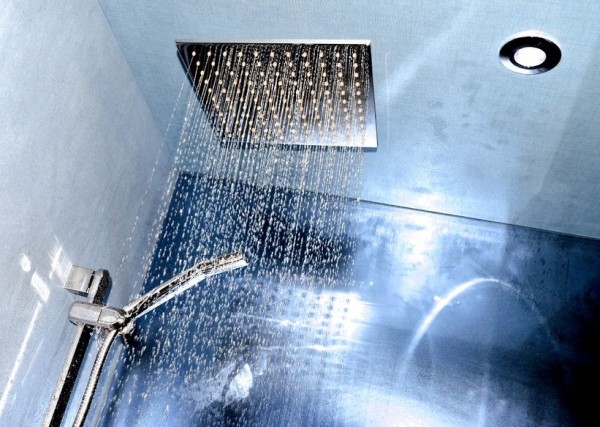 Fomentation is like a compress, except the cloth is soaked in a strong infusion before it is applied to the body. The infusion consists of hot water with herbs, oils, hydrosols, or vinegars added to it. Different types of fomentations can help with different types of health conditions including sprains/strains, congestion, broken bones, relaxation, and indigestion.
Fomentation is like a compress, except the cloth is soaked in a strong infusion before it is applied to the body. The infusion consists of hot water with herbs, oils, hydrosols, or vinegars added to it. Different types of fomentations can help with different types of health conditions including sprains/strains, congestion, broken bones, relaxation, and indigestion.- High-Powered Jets can help massage different parts of the body increasing organ function and circulation, even for just two to three minutes. Pressurized whirlpool baths can also help to alleviate stress, heal skin sores/infected wounds, and also help with burns.
- Hydrotherapy Pool Exercises are exercises done in warm water. These exercises are more slow and controlled than other aquatic exercises, usually requiring a physiotherapist instructor. Water allows gentle resistance which can help with back pain, arthritis, and other musculoskeletal conditions.
- The HydroMassage Technique uses hot water pressure to massage different parts of the body. This could be a thermal or mechanical massage. It helps improve circulation of the blood, and releases tension and knots in the body. There is also the option of HydroMassage beds. They allow you to remain fully clothed and receive a full-body massage through a traveling jet system. HydroMassage has been noted to help with low back pain, arthritis, neck injuries, TMJ, Crohn’s Disease, insomnia, spondylolysis, multiple sclerosis, lupus, fibromyalgia, tendinitis, and stress among other chronic illnesses.
- The Kneipp System involves both cold and hot water. Methods include snow walking, dew walking, hot/cold showers, compresses, and treading water. Sebastian Kneipp created the system after he developed tuberculosis, an incurable disease at the time, and cured himself with water immersion baths and water therapy. The switch from hot to cold temperatures can widen arteries, stimulate blood flow, decrease inflammation, strengthen immune system, stimulate circulation, cause lymphatic drainage, and boost hormone function.
- Seawater Treatments and seaweed are known to be therapeutic because of the high levels of minerals, specifically iodine from the ocean. These treatments help relax, cleanse, and tone the body with jets, baths, or wraps. Treatments have been shown to help with arthritis, dermatitis, insomnia, menopause symptoms, rheumatism, and weight loss.
- Sitz Baths use hot and cold water simultaneously. One bath is filled with cold water and the other adjacent bath is filled with hot water. A person will either switch between both baths or have their feet in one and their body in another.
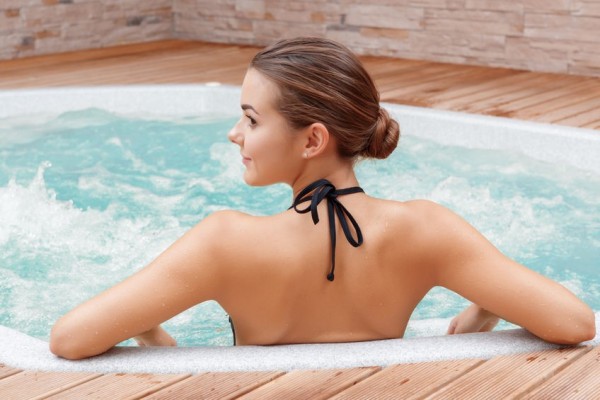 Steam, Sauna, and Compresses make use of the heat carried through water. Steam is created when water is heated beyond its boiling point. The steam helps to detoxify the body. Saunas also help to detoxify the body with dry heat reducing stress levels. Compresses are towels soaked in either hot water to promote blood flow, and ease stiff and sore muscles, or cold water to reduce inflammation and swelling.
Steam, Sauna, and Compresses make use of the heat carried through water. Steam is created when water is heated beyond its boiling point. The steam helps to detoxify the body. Saunas also help to detoxify the body with dry heat reducing stress levels. Compresses are towels soaked in either hot water to promote blood flow, and ease stiff and sore muscles, or cold water to reduce inflammation and swelling.- Warm Baths with Additives involve just relaxing in water with added components such as Epsom salts, mineral mud, ginger, baking soda, moor mud, dead sea salts, or aromatherapy oils. The additives and the length of time will depend largely on the health condition.
- Warming Socks help improve circulation and body congestion. You take a pair of wet cotton socks, wring out all the water, put them on your feet, add dry wool socks over them, and go to bed. Then, remove them in the morning.
- Watsu is a technique where a therapist massages a person while they float in a warm water pool.
- Wraps is where a person is wrapped in wet flannels sheets, then covered with dry towels and blankets. The body is stimulated by the cold, detoxified by the dry towels, and relaxed as it slowly warms up with the warm blankets. This is used for colds, fevers, muscle pain, and skin disorders.
- Hydrotherapy Swimming Pools
There are swimming pools specifically designed for some of these treatments. The major difference between a hydrotherapy pool and a regular swimming pool is the temperature is set higher at around 95 degrees Fahrenheit. The warmer water helps muscles not to tense up, creating deeper relaxation and improving circulation. Just floating weightless with moving water washing over a person can help to relax the body and mind. A hydrotherapy pool is typically rectangular and will vary in depth to allow walking as well as deep water exercises. Often it will have a hoist or wheel chair access available to lower someone into the pool who can’t physically get it on their own.
What Health Conditions Can Hydrotherapy Help with?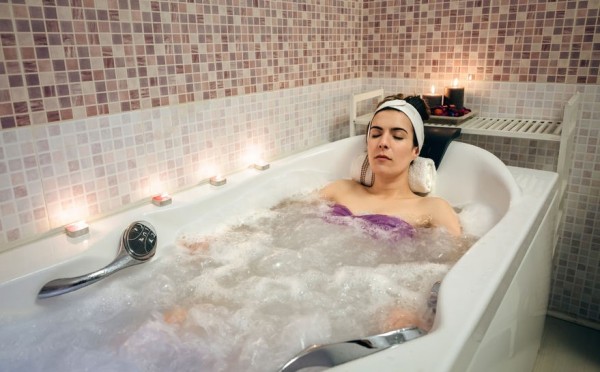
First of all, anyone can benefit from hydrotherapy treatments. Many people are benefiting already by taking hot baths after a stressful day, using ice packs on injuries, or warm or cold compresses when sick. Some people visit spas for medical conditions or just to unwind and relax. When it comes to chronic pain many health conditions can benefit from hydrotherapy.
Health Conditions Certain Hydrotherapy Treatments may NOT be Appropriate for Are:
Airborne infections/diseases, Cardiovascular Disease, Decreased Sensitivity to hot or cold temperatures, Fevers, Heart Disease, Hemorrhage, High Blood Pressure, Inflammation, Kidney Disease, Pregnancy, Uncontrolled Seizures, and Vascular conditions.
It is advised to check with your health care professional if you have any serious health conditions, before trying many of the hydrotherapy treatments.
Some Specific Health Issues Hydrotherapy Has Been Known to Help with Are:
- Ankylosing Spondylitis
- Arthritis – Osteoarthritis and Rheumatoid Arthritis
- Back Pain – Sciatica and Lumbar instability
- Cardiovascular/Pulmonary conditions
- Complex Regional Pain Syndrome
- Fibromyalgia
- Heart Disease
- Injuries – Accidents and Sports (bone fractures or tendon repairs)
- Joint pain
- Musculoskeletal conditions in general
- Neck Pain – whiplash
- Neurological conditions such as: Cerebral Palsy, Multiple Sclerosis, Muscular Dystrophy, and Parkinsons Disease.
- Post-Surgery for conditions such as abdominal, ACL reconstruction, back, joint replacement, knee replacement, and hip replacement.
- Tendinopathy
How Safe is Hydrotherapy?
Hydrotherapy is a relatively safe treatment. However, as mentioned in “What Health Conditions Can Hydrotherapy Help with?” there are a few conditions hydrotherapy may not be appropriate for. There is also the possibility for anyone to have an allergic reaction to an essential oil or herb added to bathing water. The best way to avoid an allergic reaction is to test how your skin reacts to the product first. Rub a small amount of the diluted product on your skin and pay attention to redness or irritation. Another serious side effect can be overheating from a sauna, steam room, or hot tub, so make sure there is supervision, when needed. And always drink plenty of fluids. Always check with your health care provider if you are unsure of whether a hydrotherapy treatment is safe for your health condition.
History of Hydrotherapy
Therapeutic Benefits of Water Used for Centuries Worldwide
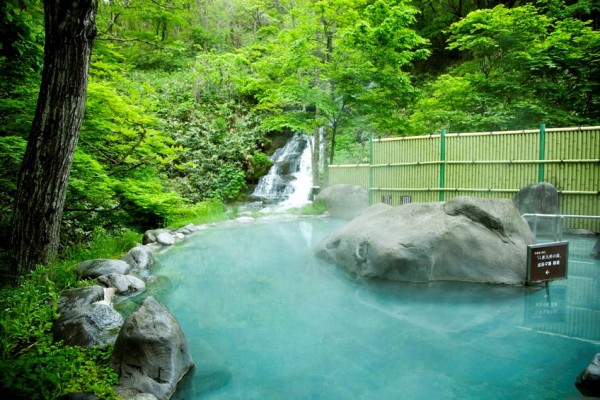 Cultures from around the world (Native Americans, Romans, Egyptians, Japanese, Greeks, Chinese) have used water for centuries to stay healthy and ward off diseases. Hippocrates, the father of modern medicine, prescribed bathing in spring water to ward off sicknesses. Hydrotherapy dates as far back as 4500 B.C. according to evidence on an ancient bath unearthed in Pakistan (Encyclopedia.com).
Cultures from around the world (Native Americans, Romans, Egyptians, Japanese, Greeks, Chinese) have used water for centuries to stay healthy and ward off diseases. Hippocrates, the father of modern medicine, prescribed bathing in spring water to ward off sicknesses. Hydrotherapy dates as far back as 4500 B.C. according to evidence on an ancient bath unearthed in Pakistan (Encyclopedia.com).
Hydrotherapy has been used for centuries in the form of bath houses, steam, hot mineral springs, aromatic massages, and spas. Bathhouses were an essential part of ancient Roman culture documenting back to the first century. Roman physicians Galen and Celsus wrote of treating patients with warm and cold baths in order to prevent disease (Encyclopedia.com). Egyptian royalty bathed in oils and Roman baths were popular among citizens. At this time, hydrotherapy was used more as a means of relaxation than to improve illnesses. Public bathhouses didn’t make their way into America until the mid 1700s.
The Creation of Modern Hydrotherapy
It was in the 19th century when hydrotherapy began to form into the therapy that we often see in our society today. Sebastian Kneipp (1821-1897), a Bavarian monk, created many of the hydrotherapy techniques still used today. Kneipp created the hydrotherapy systems after he developed tuberculosis (an incurable disease at the time), and cured himself with water immersion baths and water therapy. He claims that many of his patients were cured from diseases after submerging their bodies into cold rivers 2-3 times in a week (University of New Hampshire). Many of his techniques at the time were administered by doctors for rehabilitation to help with medical treatments. Kneipp opened many hydrotherapy clinics which are still around today. His concept of Contrast Hydrotherapy alternating hot and cold water is still popular today.
Vincenz Priessnitz is also known to be one of the creators of hydrotherapy techniques. He was treating patients with baths, packs, and cold spring water in Austria around the same time as Kneipp. Just in his first year of opening a spa he treated over 1,500 patients. His hydrotherapy techniques paved the way for many physicians and specialists.
Hydrotherapy Today
Hydrotherapy is a common treatment today to be used by naturopaths. Although it has become a great form of therapy in the modern world, it is barely spoken about or promoted in Northern America. In Europe and Asia, it is popular for people to take advantage of hot mineral springs.
Research Studies to Support Hydrotherapy
Osteoarthritis Study
In 2018, a study was published in the Clincial Rehabilitation showing the success of hydrotherapy in the treatment of Osteoarthritis. Researchers compared the effectiveness of twice-weekly individual aquatic exercise sessions to once a week group patient education in 60 people with knee osteoarthritis. Pain and function both improved after the eight weeks for those doing the aquatic therapy.
Another report showed short-term improvement in pain and quality of life for people with knee/hip osteoarthritis after doing aquatic exercise. This research study was published in the Cochrane Database of Systematic Reviews. It had a total of 1,190 participants.
Rheumatoid Arthritis Study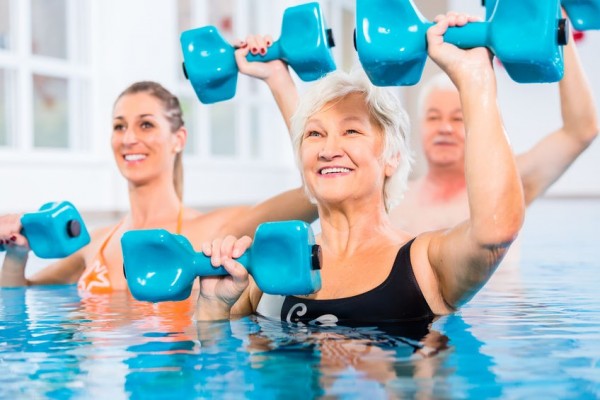
Six studies showed reduced pain, joint tenderness, mood and tension symptoms, and increased grip strength for those suffering from Rheumatoid Arthritis, after receiving short-term hydrotherapy treatments. Most of the studies compared hydrotherapy treatment to receiving no treatment at all. Hydrotherapy was shown to positively help people with rheumatoid arthritis vs. no treatment in the short-term.
Recovery from Athletic Activity Study
In 2017, a report published in the Journal of Strength and Conditioning Research showed the effectiveness of cold water immersion and contrast water therapy for recovery from athletic activities. The study showed benefits in neuromuscular recovery and fatigue 24-hours after team sports.
Fibromyalgia Study
Based on 10 randomized controlled trials hydrotherapy has shown positive outcomes for helping with the management of fibromyalgia. Pain, health-status, and tender point count showed improvements.
Hydroreference.com has a few other studies showing the success of hydrotherapy for multiple ailments.
Education of a Hydrotherapist
People who practice hydrotherapy are usually naturopath doctors, massage therapists, estheticians, spa workers, or physical therapists. So hydrotherapy is an addition to the training and education they already have for their profession. In the U.S. individual workshop courses may take just 15 hours with specialty training taking up to 100 hours or more. At a hydrotherapy school the curriculum covers: history and principles, techniques, equipment used, choosing water temperatures, and physiological effects and medical contraindications (Natural Healers). Hydrotherapists become licensed and certified usually under their profession (naturopath, massage therapist, physical therapist).
How to Find Hydrotherapy Help
Hydrotherapy is often practiced by naturopaths, other alternative practitioners, massage therapists, and physical therapists in spas, clinics, and hospitals. So you can find a hydrotherapist by searching for a particular therapist or practitioner. You can also search for “hydrotherapy” or search using the term “aquatic therapy” in your area. A recent study showed that 55% of American spas do offer hydrotherapy options.
What to Expect at an Initial Appointment?
There are different treatments for different conditions, so a practitioner will determine the best treatment after doing a detailed consultation and an evaluation. The first initial appointment will likely take an hour or more. Aquatic therapy treatment sessions after that, maybe anywhere from 30 – 45 minutes long.
References:
University of New Hampshire/Hydrotherapy. Retrieved from:
https://www.unh.edu/health/ohep/practices/hydrotherapy
Sports Injury Clinic/Hydrotherapy Explained. Retrieved from:
http://www.sportsinjuryclinic.net/treatments-therapies/hydrotherapy
Wong, Cathy. (2018 March 2nd). VeryWellHealth/What is Hydrotherapy. Retrieved from:
https://www.verywellhealth.com/different-types-of-hydrotherapy-89993
Perfect Balance Clinic/History of Hydrotherapy. Retrieved from:
http://www.perfectbalanceclinic.com/blog/injury-and-treatment-advice/history-of-hydrotherapy/
Encyclopedia.com/Hydrotherapy. (2005). Retrieved from:
https://www.encyclopedia.com/medicine/divisions-diagnostics-and-procedures/medicine/hydrotherapy
Natural Healers/Hydrotherapy Training and Careers. Retrieved from:
https://www.naturalhealers.com/hydrotherapy/
Physio.co.uk/Conditions Helped by Hydrotherapy. Retrieved from:
http://www.physio.co.uk/treatments/hydrotherapy/conditions-helped-by-hydrotherapy.php
HEALTHSMART EXERCISE PHYSIOLOGY/Hydrotherapy for Chronic Conditions. Retrieved from:
http://healthsmartep.com.au/hydrotherapy-chronic-disease/
Alternative Medicine Zone/Introduction Hydrotherapy and Types of Hydrotherapy. (2015 May 25th) Retrieved from:
ScratchMommy/What is a Fomentation? (and why you should make them!).
Retrieved from: https://www.scratchmommy.com/stacy-what-is-a-fomentation-and-why-make-one/
Al-Qubaeissy MD, Khamis Y., Fatoye PhD, Francis A., Goodwin PhD, Peter C., Yohannes Phd, MSc, FCCP, Abebaw M. Wiley Online Library/Muskuloskeletal Care: The Effectiveness of Hydrotherapy in the Management of Rheumatoid Arthritis: A Systematic Review. Retrieved from:
https://onlinelibrary.wiley.com/doi/abs/10.1002/msc.1028
Taglietti, Marcelo, Facci, Ligia Maria, Trelha, Celita Salmaso, Cristiane de Melo, Fernanda, Wosiack da Silva, Daniela, Sawczuk, Geovane, Ruivo, Thamires Marques, Barbosa de Souza, Thaisley, Sforza, Chiarella, Cardoso, Jefferson Rosa. (2018, February 8th) SAGE Journals/Clinical Rehabilitation: Effectiveness of aquatic exercises compared to patient-education on health status in individuals with knee osteoarthritis: a randomized controlled trial. Retrieved from:
http://journals.sagepub.com/doi/10.1177/0269215517754240
Procare Physical Therapy/Aquatic Therapy. Retrieved from:
https://procarept.org/aquatic-therapy/
Higgins, Trevor R, Greene, David A., Baker, Michael K. (2015 May 1st) Ovid/Effects of Cold Water Immersion and Contrast Water Therapy for Recovery From Team Sport: A Systematic Review and Meta-analysis. Retrieved from:
https://insights.ovid.com/crossref?an=00124278-201705000-00032